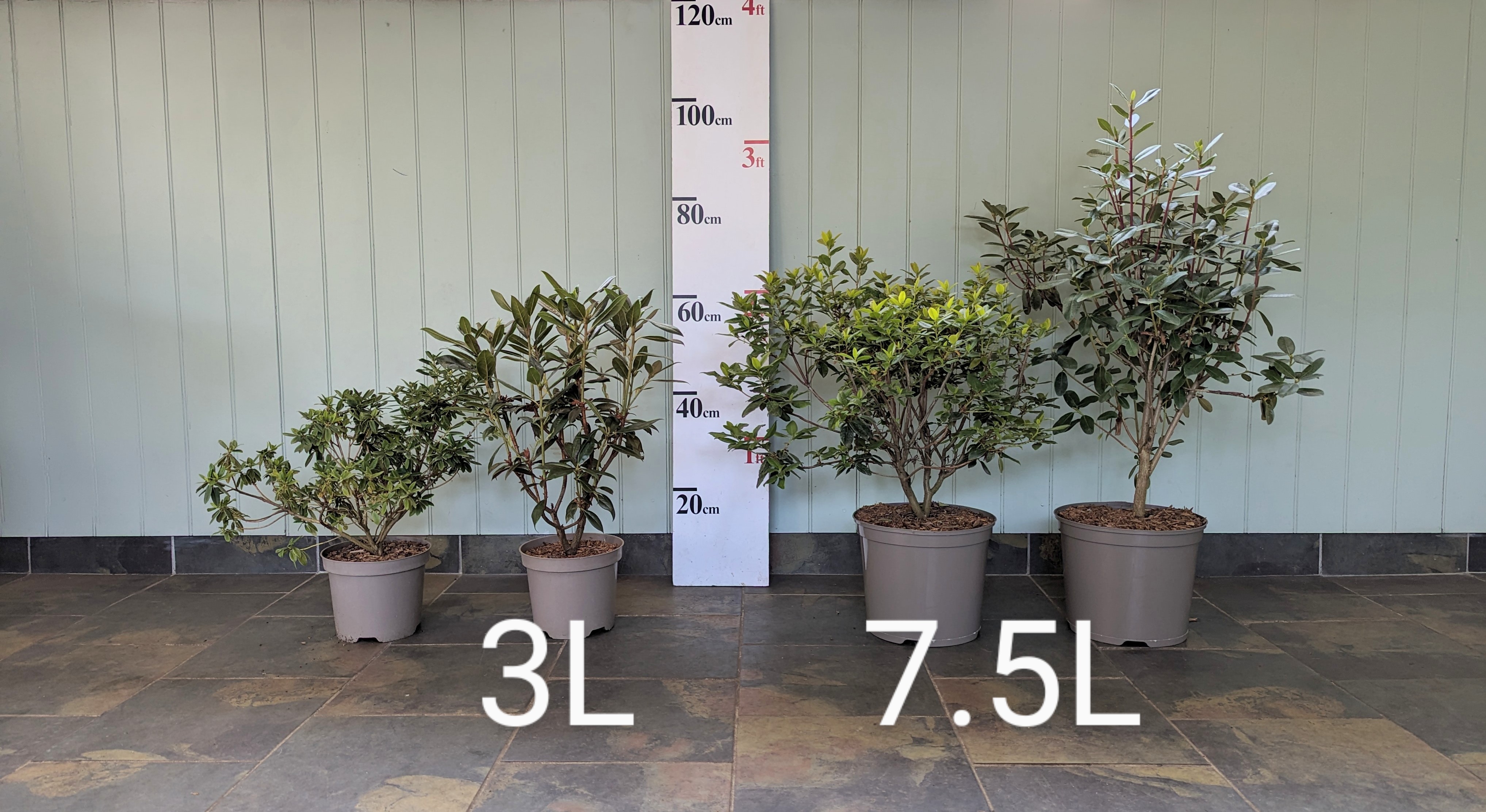Rhododendron dauricum 'Hokkaido'
Item: SDAUHOK
 Currently Unavailable
Currently Unavailable
Jan-Mar
White & Cream
100-125cm
Not Scented
Yes
To -20 °C
Collect in Store
This item is available for collection.
Home Delivery
UK mainland delivery from £8.95
(RHODORASTRA H6) Prolific clusters of early white flowers in December and January. Good copper autumn colour. Leaves are partly deciduous. Height 100-125cm in 10 years. Requires well drained soil, and shelter when young.
This makes a nice alternative to the better known dauricum 'Midwinter'. Both varietes are difficult to propagate and are always scarce to find. They can be a little tricky when young and are prone to mildew if kept in a greenhouse, so are really best planted out in a sheltered spot for the first year or so. After a few years, they develop into very tough plants which are suitable for most locations.
- Recommended for lovely early flower.
- Plantsman range.
- Ideal position: needs careful site selection.
- Habit: upright.
- Group: Small Leaved Rhododendron.
- Subsection: Rhodorastra.
- Introduction date: for dauricum pre 1900 (1780) and this clone was named by Peter Cox in 1981.
- Species distribution: dauricum distribution: Russia, Manchuria, NE China, Korea, Japan.
- Approximate altitude: unknown.
- Ideal soil: pH 4.5 to 6.0
- RHS Hardiness Rating: H6.
- How we usually propagate this plant: Cutting.
- Awards: AM 1979
Size Guide

The Basics
Ideal soil
Acidic soil, good organic content, pH 4.5-6.0. Inkarho range of rhododendrons will tolerate soils up to pH7.5
Sun or Shade
Light dappled shade is best for most varieties.
Shelter
Refer to hardiness rating. Give young plants protection.
Site Selection
Avoid close to trees, roots, invasive weeds, walls, hot patios, dry banks and waterlogged soils. Do not use weed matting or stone mulch.
Plant spacing
Use the height shown in 10 years as a guide to the distance between each plant. Allow room for plant to fill out. If planting closer for instant impact, be prepared to move plants after a few years.
Compost
- 3 litre pot, dig in 10-20 litres of ericaceous compost.
- 7.5 litre pot, dig in 20-30 litres of ericaceous compost.
- 70-80cm specimen, dig in 60 litres of ericaceous compost.
- 100-120cm specimen, dig in 120 litres of ericaceous compost.
Planting depth
Plant high in the ground, with the top of the rootball visible.
Feeding
Slow-release ericaceous feed recommended in March and straight after flowering.
Mulch
Recommended every few years.
Water
The key ingredient! Keep moist all season, especially the critical time at end of June for flower bud initiation. Tap water is better than no water. Heavy dose at least once per week in dry weather.
Drainage
Ensure good drainage in winter, especially with yellow flowering varieties. Avoid waterlogged sites.
Pruning
Rhododendrons and Camellias: Not normally required. Tidy wayward shoots after flowering.
Evergreen azaleas and Bloombux can be clipped into a low hedge.
Magnolias and Acers: Formative pruning when young to shape into a tree or bush.
Deadheading
Remove old flower-heads, particularly on young or weak plants.
For further advice see here
Delivery & Returns
Our website calculates the delivery charge according to weight and delivery location throughout the UK. To see these charges, please enter your postcode at the checkout, and you will see the charge vary as you add more items to your wheelbarrow.
 Millais Nurseries
Millais Nurseries



